Our X-Ray Universe: Amazing Photos by NASA's Chandra X-Ray Observatory
Markarian 739 or NGC 3758 Galaxy
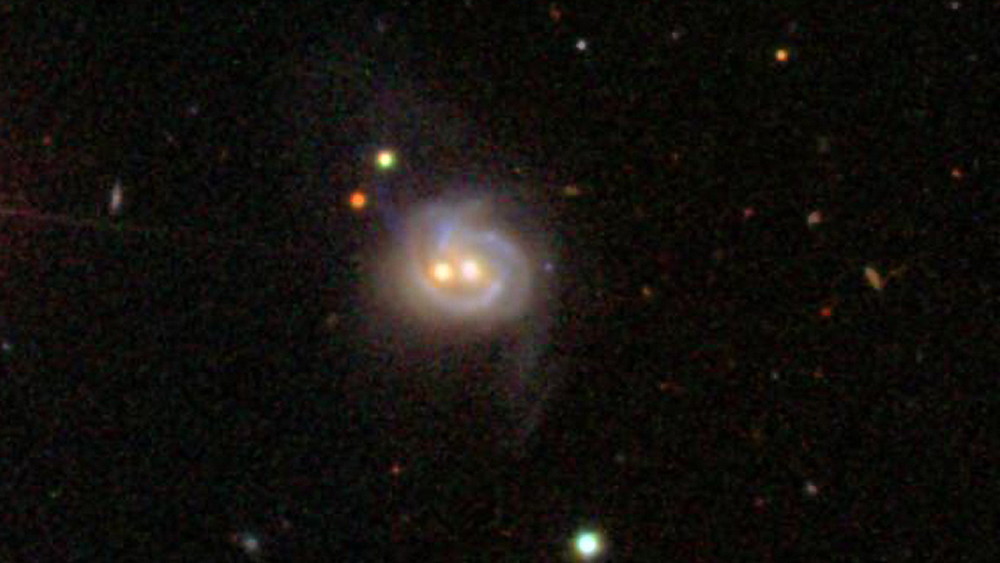
Viewed in visible light, Markarian 739 resembles a smiling face. It actually is a pair of merging galaxies which lies 425 million light-years away.
Abell 2744, or Pandora's Cluster, as seen by Hubble, Chandra and the VLT
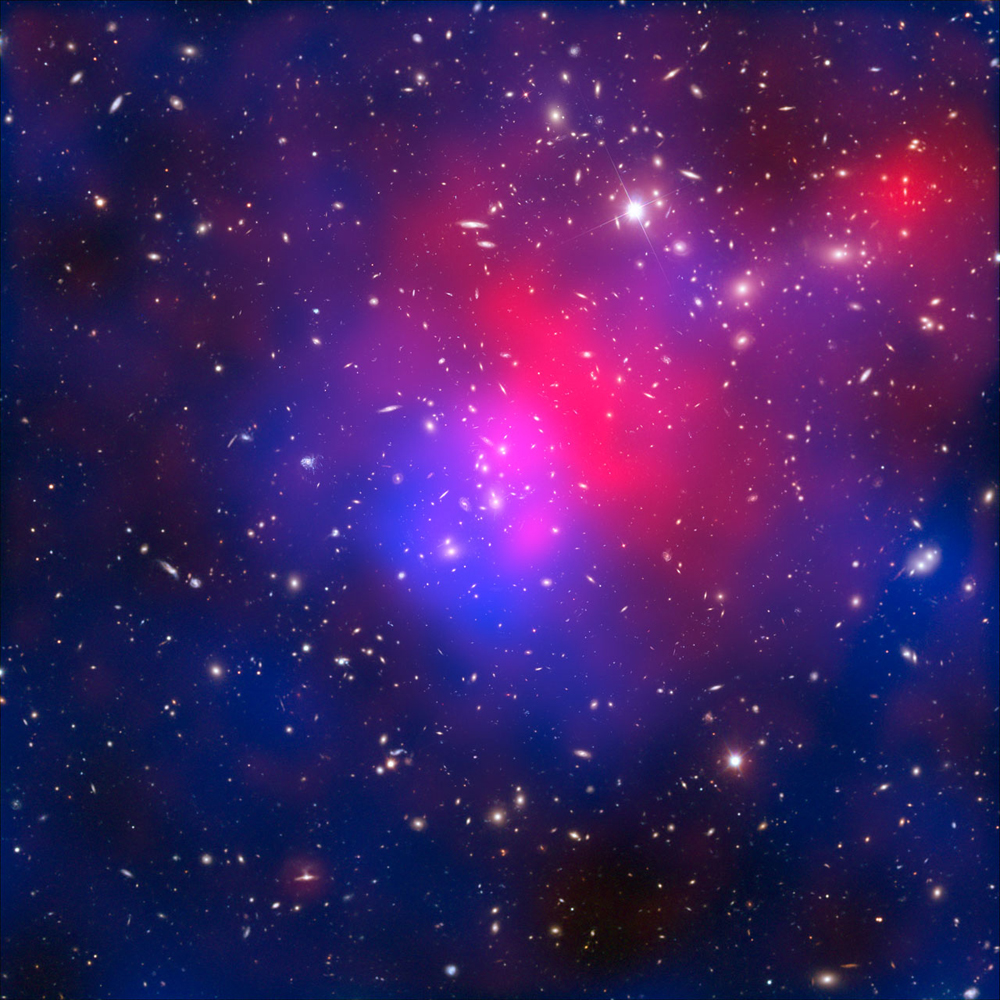
Composite image of the galaxy cluster Abell 2744, also known as Pandora's Cluster, taken by the Hubble and Chandra space telescopes and the Very Large Telescope in Chile. Hot intracluster gas is shown in pink, and the blue overlay maps the location of dark matter.
Pulsar PSR J0357+3205 Has a Long Blue Tail
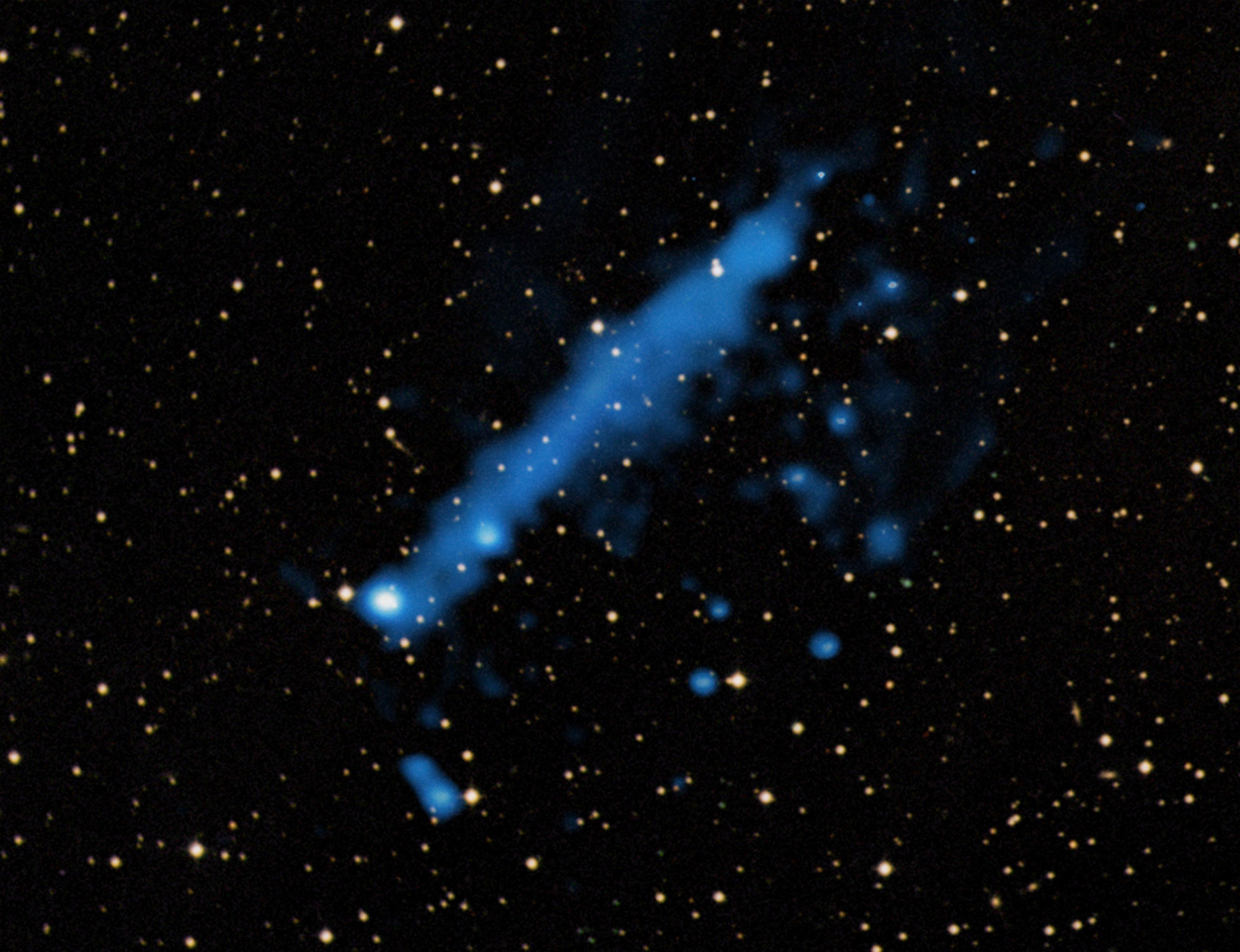
This pulsar, known as PSR J0357+3205 (or PSR J0357 for short), apparently has a long, bright X-ray tail streaming away from it.
Star Blasting Planet With X-Rays
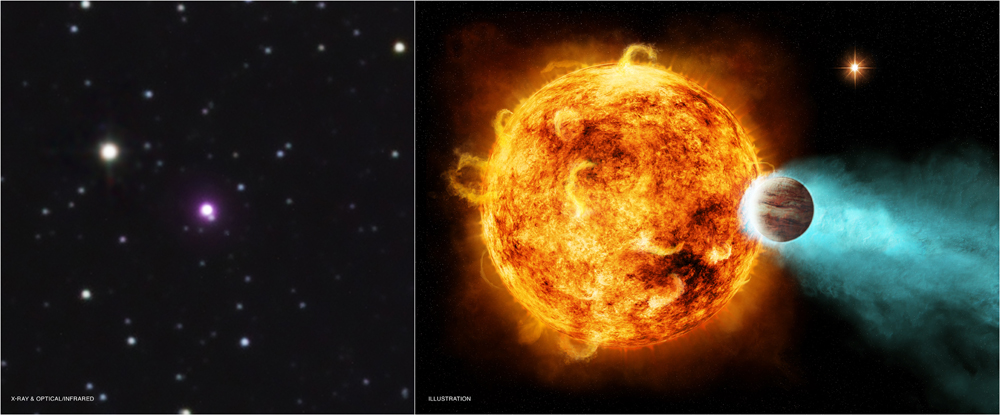
Image (left) of the nearby star CoRot-2a. The star is pummeling a close-orbiting planet with a barrage of X-rays 100,000 times more intense than Earth receives from the sun, as the artist's concept (right) shows.
NASA's Chandra Finds Largest Galaxy Cluster in Early Universe
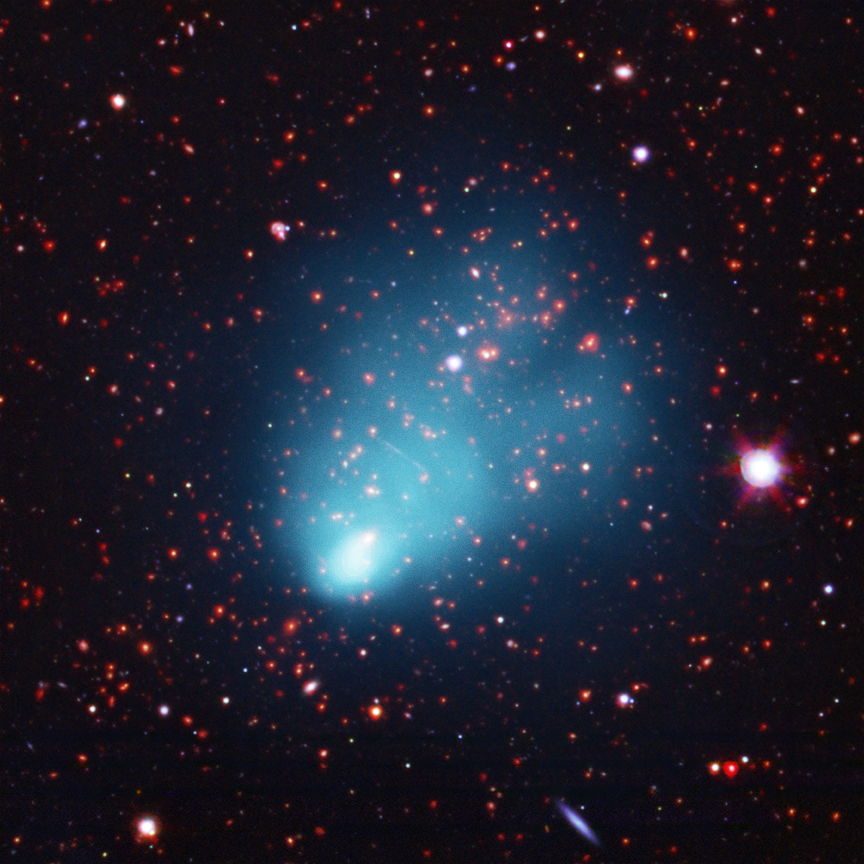
A composite image shows El Gordo in X-ray light from NASA's Chandra X-ray Observatory in blue, along with optical data from the European Southern Observatory's Very Large Telescope (VLT) in red, green, and blue, and infrared emission from the NASA's Spitzer Space Telescope in red and orange. Image released Jan. 10, 2012.
Milky Way's Black Hole Gobbles up Asteroids
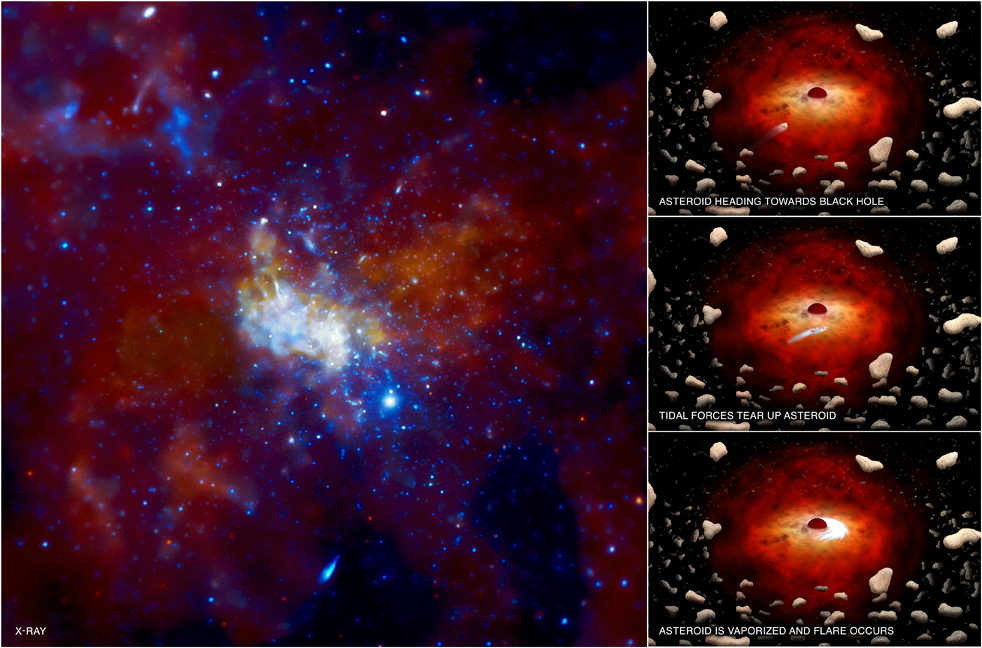
This image from NASA's Chandra X-ray Observatory shows the center of our galaxy, which hosts a supermassive black hole known as Sagittarius A* (Sgr A* for short). Chandra has detected X-ray flares about once a day from Sgr A*; they may result from the black hole gobbling up asteroids, as the artist's concept on the right depicts.
Supernova Explosion Turns Star Inside Out
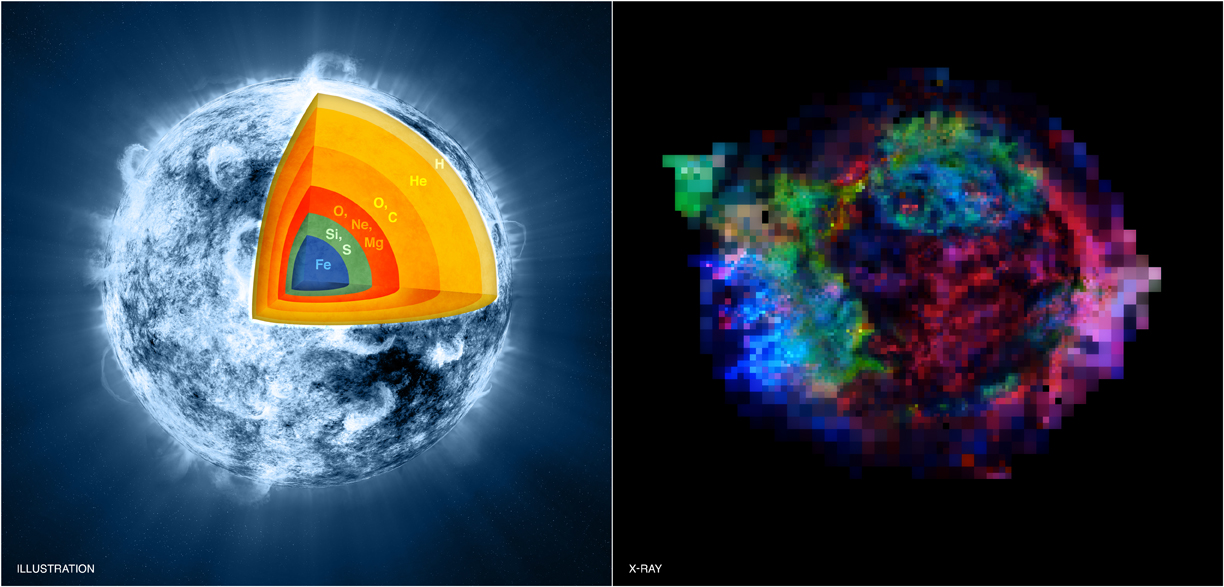
A "before" artist's illustration (left) and observations from NASA's Chandra X-ray Observatory (right) show how an explosion turned the supernova remnant Cassiopeia A inside out.
Get the Space.com Newsletter
Breaking space news, the latest updates on rocket launches, skywatching events and more!
Black Hole Booted from Home Galaxy
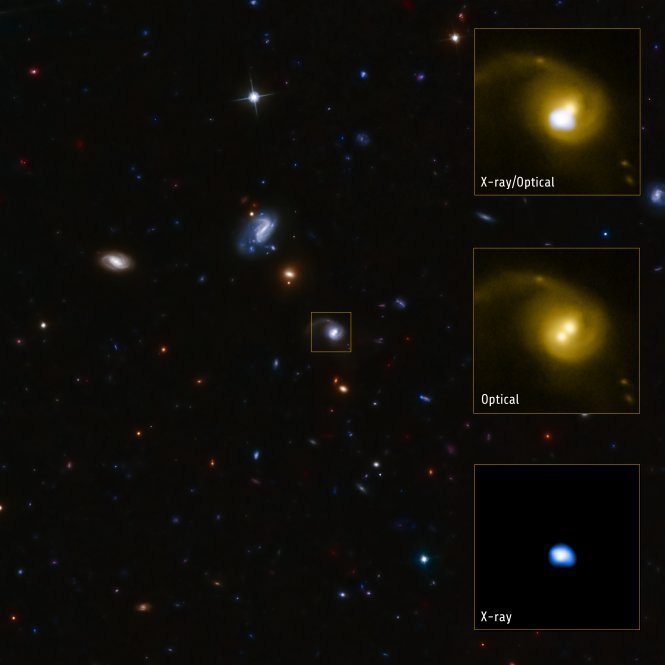
System CID-42, located about four billion light-years away from Earth, harbors a supermassive black hole that is apparently being booted out of its home galaxy.
Youngest Black Hole Home: Supernova W49B
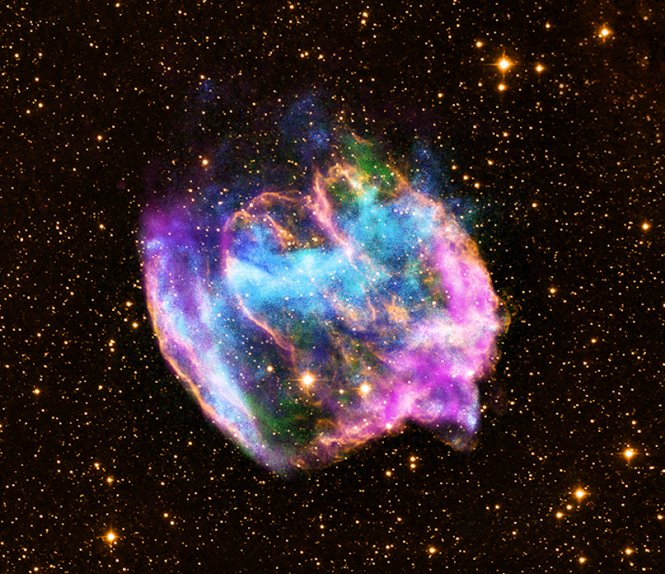
The highly distorted supernova remnant W49B in this image may contain the youngest black hole in the Milky Way galaxy. The image combines X-rays from NASA's Chandra X-ray Observatory in blue and green, radio data from the NSF's Very Large Array in pink, and infrared data from Caltech's Palomar Observatory in yellow. Image released Feb. 13, 2013.
Quasar GB1428
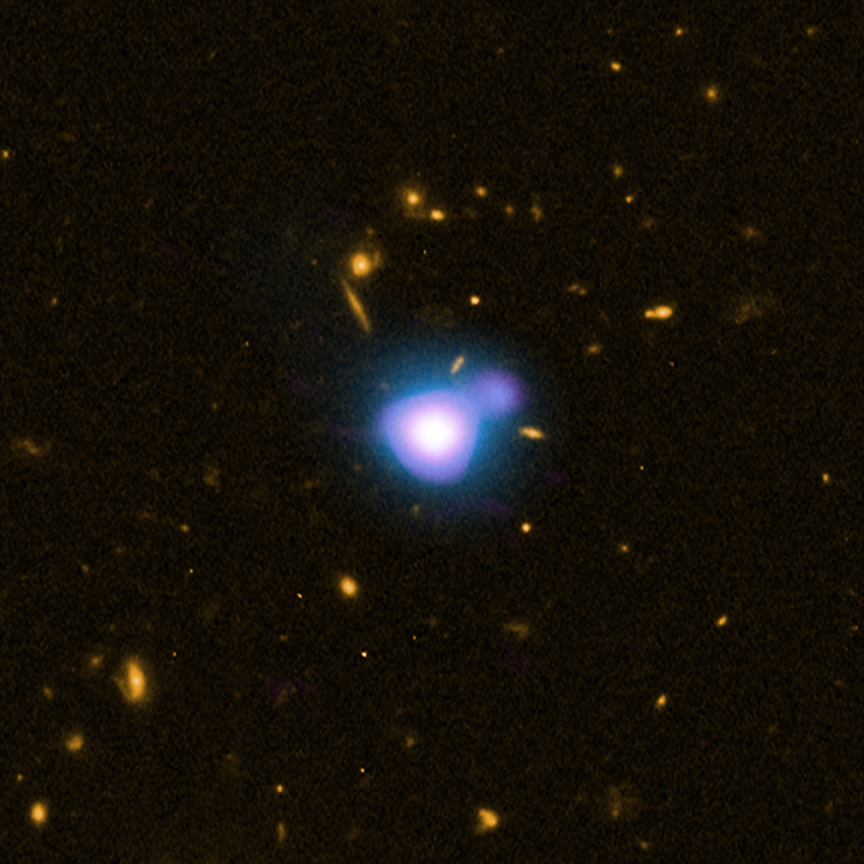
This composite image shows the most distant X-ray jet ever observed. X-ray data from NASA's Chandra X-ray Observatory are shown in blue, radio data from the NSF's Very Large Array are shown in purple and optical data from NASA's Hubble Space Telescope are shown in yellow.
Join our Space Forums to keep talking space on the latest missions, night sky and more! And if you have a news tip, correction or comment, let us know at: community@space.com.

Space.com is the premier source of space exploration, innovation and astronomy news, chronicling (and celebrating) humanity's ongoing expansion across the final frontier. Originally founded in 1999, Space.com is, and always has been, the passion of writers and editors who are space fans and also trained journalists. Our current news team consists of Editor-in-Chief Tariq Malik; Editor Hanneke Weitering, Senior Space Writer Mike Wall; Senior Writer Meghan Bartels; Senior Writer Chelsea Gohd, Senior Writer Tereza Pultarova and Staff Writer Alexander Cox, focusing on e-commerce. Senior Producer Steve Spaleta oversees our space videos, with Diana Whitcroft as our Social Media Editor.









